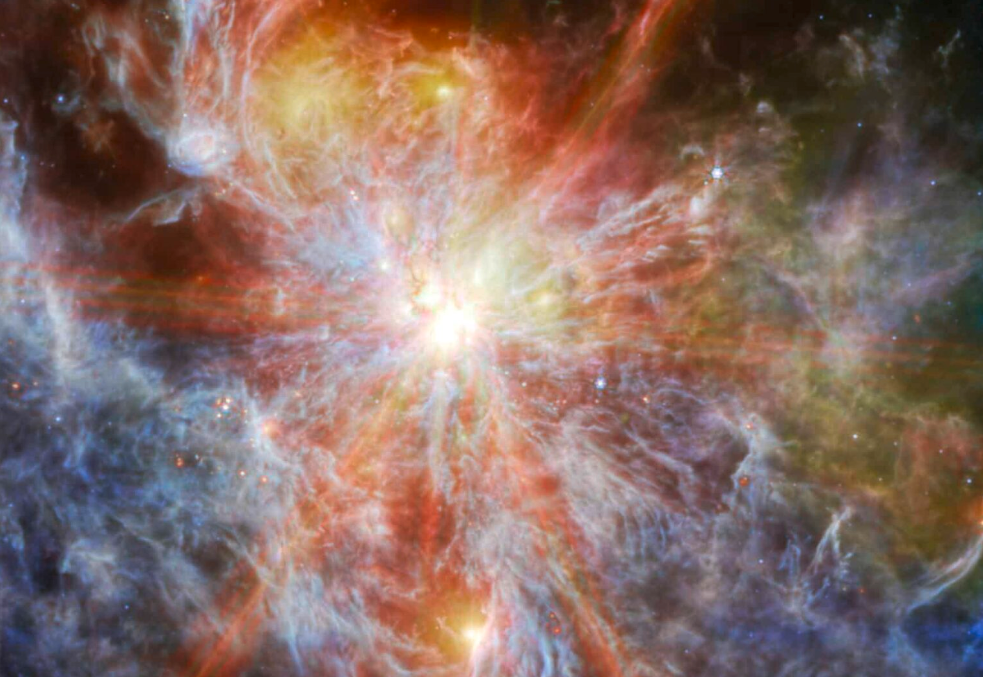
For all the darkness, the cosmos sure can surprise us with remarkably bright phenomena. This case is especially true in a heavenly new image released by space scientists, which shows the magnificent result of stars being formed. The European Space Agency, or ESA, declared, “A massive cluster is born” upon revealing the image. Scientists say it shows N79, a massive star-forming region within the Large Magellanic Cloud (LMC), a satellite galaxy of the Milky Way.
The Large Magellanic Cloud (LMC) is a beautiful dwarf galaxy orbiting the Milky Way, located at a distance of about 163,000 light-years away. It’s the fourth-largest galaxy in our Local Group, making it a close neighbor in the grand scheme of the universe. The spectacular new image from the James Webb Telescope reveals glowing gas and dust deep within the clouds, as well as “embedded baby stars.”
N79 spans roughly 1630 light-years in the generally unexplored southwest region of the LMC. NASA’s Webb Telescope’s X account (formerly Twitter) dramatically commented, “It’s always darkest before the dawn.” Studying N79 allows us to glimpse into the early universe, offering clues about how stars formed in the distant past. Its abundance of heavy elements, forged in previous generations of stars, provides valuable insights into the chemical evolution of galaxies.
The ESA writes, “N79 produces stars at a furious rate, much faster than star-forming regions found in our galaxy. In fact, N79’s chemical composition is similar to those from the early universe, when star formation was at its peak. Here, those vivid rays resembling sunlight are actually diffraction spikes. Most noticeable for bright, compact objects, diffraction spikes are somewhat like a telescope’s ‘signature.'” The ESA continues, “The eight-point pattern is the result of the telescope’s hexagonal mirror design, combined with its secondary mirror struts. Meanwhile, NASA’s Hubble Space Telescope produces a four-pointed diffraction spike pattern due to its circular mirror.”
The James Webb Space Telescope is designed to conduct infrared astronomy. Its high-resolution and high-sensitivity instruments allow it to view objects too old, distant, or faint for the Hubble Space Telescope.
